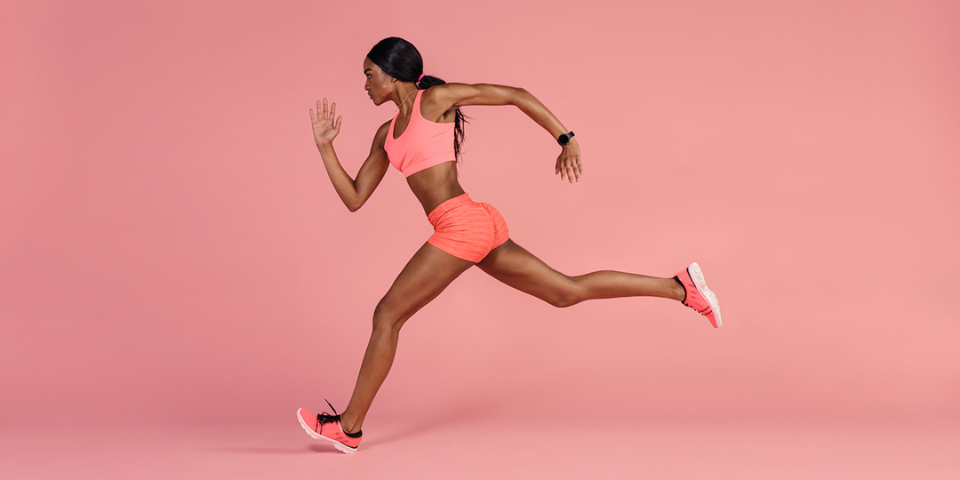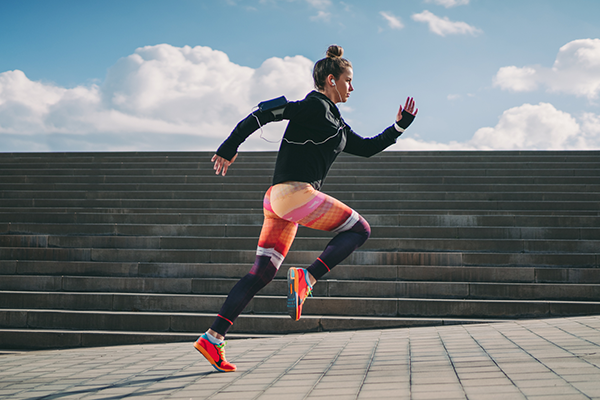Strike a Pose! Become a Better Runner With the Pose Method

If you want to reap more benefits and experience fewer injuries from running, try the Pose Method. Pose running is popular in CrossFit, and it’s gaining momentum in other sports.
Here, we explain what pose running is and why you should give it a try.
What Is the Pose Method of Running?
The Pose Method of running teaches you how to run efficiently to minimize your risk of injury.
“Running is a very high-impact movement, and we can see a lot of injuries,” says Emily Sears, a Pose Method-certified trainer. “Pose is a way to increase your times and get better at running while keeping your body healthy,” she adds.
Who Created the Pose Method?
The Pose Method was developed in 1977 by Nicholas S. Romanov, a two-time Olympic coach in the former Soviet Union. The method is grounded in the idea that an optimal pose or position exists for athletes in every sport.
You can learn Pose Method principles to optimize your performance and reduce injuries in several sports, but the running technique is the most popular.
What Are the Principles of Pose Running?
Pose running defines the ideal positioning for three key elements of a runner’s stride:
1. Pose
Your body should form one pose at all times during your run: the S-stance.
This is where the shoulders, hips, and ankles remain aligned with your support leg, with your weight on the ball of your foot. You’ll change this pose from one leg to the other.
2. Fall
Use gravity to create forward movement. Lean forward with your body and focus on falling forward with every step you take.
3. Pull
Once you “fall,” initiate the next step by pulling your lead heel toward your glutes instead of pushing your foot into the ground.
What’s the Difference Between Pose Running and Just Running?
Pose running isn’t the same as “going for a jog.” Here’s what sets it apart.
1. Attention to form
Thanks to the cues, pose running forces you to be mindful of your form at all times.
“A lot of people just go out and start running, and they don’t give their form a second thought,” Sears says. But when that happens, form begins to break down, which can increase your odds of injury.
2. Less impact on knees
Researchers from the University of Cape Town in South Africa found that pose running calls for more of a forefoot strike than a midfoot or heel-toe strike.
This foot strike shortens stride height and length in natural heel-strikers, leading to less impact on the knees.
3. Boosts efficiency
Running with a slight forward lean encourages gravity to help with forward movement. This may help you run with less energy and effort.
Pose Running Drills You Can Try
Practice these beginner pose running drills for 5 to 15 minutes before heading out for a walk or run.
1. Running pose
- Stand with your right knee slightly bent. Pull your left heel up, so it’s under your left hip, about calf-height. Focus on pulling your foot up instead of raising your knee.
- Hold briefly, keeping your weight on the ball of your right foot.
- Return to start and repeat on the opposite side.
- Practice this drill for 2-5 minutes.
2. Two leg hops
- Gently hop in place with both feet. Stay on the balls of your feet and try to break contact with the ground as little as possible.
- Hop in place for 10 seconds. Then, fall forward with your entire body and continue the drill for 10 yards. Keep your cadence high.
- Finish with a 10-yard jog.
- Practice this drill for 2-5 minutes.
3. The pony drill
- While standing, pull your left heel slightly up, keeping your toes in contact with the ground.
- As you pull your heel up, bounce slightly to shift your weight onto the opposite foot. Repeat on the opposite side.
- Continue in place for 10 seconds. Then, fall forward with the entire body and perform the drill for 10 yards.
- Finish with a 10-yard jog.
- Repeat this drill for 2-5 minutes.






